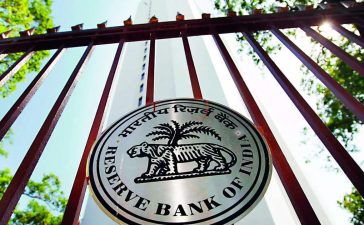NatWest has downgraded its profitability outlook and warned that competition for savers’ cash is putting pressure on its finances, sending its shares plunging.
Investors were spooked by a predicted drop in the bank’s net interest margin (NIM), which accounts for the difference between what is charged for mortgages and paid on savings and is a key measure of banks’ profitability.
NatWest said it was having to make larger payouts to savers who had been shifting cash from current accounts, into fixed-term savings accounts that offer higher interest rates. That trend had been compounded by a simultaneous easing of mortgage rates, which have been cut in order to promote mortgage take-up among borrowers who have been put off by higher costs.
Those pressures are likely to continue, given that the Bank of England is expected to keep interest rates, currently at 5.25%, higher for longer.
“There is no doubt that many of our customers remain concerned about the future and many are changing their behaviour as they adapt to unprecedented changes in the base rate, both in terms of quantum and speed, and as the cost of living and doing business continues to rise,” NatWest’s chief financial officer, Katie Murray, said. “This is impacting both loan and deposits,” she added.
NatWest – which is still almost 40% owned by the taxpayer after its 2008 government bailout – said its margin fell from 3.13% to 2.94% between July to September. The bank is now expecting NIM to be “greater than 3%” for the full year, having previously guided that it would reach 3.15%.
“The change in deposit mix clearly has implications for our income and our margins,” Murray said. “It’s one of the key drivers of our net interest margin, alongside competitive pressure in the mortgage market and our higher rate of pass-through [of interest rates].”
The news weighed on listed shares of NatWest, which also released a long-awaited report on Friday morning into its controversial decision to close Nigel Farage’s bank accounts.
NatWest shares fell as much as 18.2% at one point. The last drop of comparable scale was the day after the Brexit vote in 2016. Shares were temporarily suspended on Friday before they regained some ground to trade down by 12.5% by mid-afternoon.
That was despite a 22% rise in NatWest’s pre-tax profits in the third quarter, which rose to £1.3bn, from £1.1bn a year earlier. Net interest income, which accounts for the difference in interest paid by borrowers and paid out to savers, rose only 1.7% to £2.7bn.
The bank also put aside another £229m to cover a potential rise in defaults by struggling customers but Murray said there was little sign of stress across its loan book. “We’re not seeing any meaningful rise in defaults,” she said. “Arrears in mortgages and credit cards are stable at pre-Covid levels. Overall, impairments remain low and are now forecasted to come in below our previous expectations for 2023.”
after newsletter promotion
Margin woes are not unique to NatWest, with Lloyds and Barclays having flagged similar concerns this week.
Politicians and campaigners have put pressure on banks, claiming they were profiteering by failing to pass on higher interest rates to savers while raising charges for home loan customers. A resulting rise in interest rates across the savings market has increased competition among banks hoping to attract, and maintain, customer deposits.
Lloyds revealed on Wednesday that its interest margin had narrowed from 3.14% to 3.08% in the July to September period, and warned that the decline was expected to continue into the following quarter.
Barclays also forecast a decline, saying in its results on Tuesday that its NIM would probably fall within a range of 3.05% to 3.1% in 2023, down from previous forecasts of 3.15% to 3.2%.







